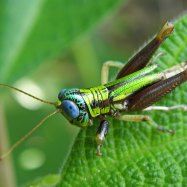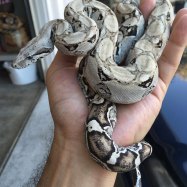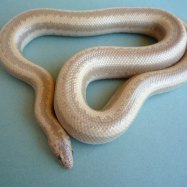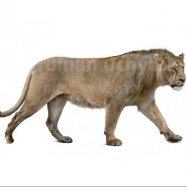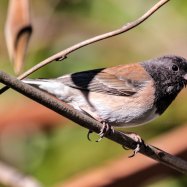
Bulldog
About 14-15 inches (35-38 cm)
Bulldogs, part of the Canidae family, are popular medium-sized dogs known for their muscular build and compact body shape. They can grow up to 14-15 inches and can be found in almost every country. These friendly and loyal dogs make great companions for any household.
Animal Details Summary:
Common Name: Bulldog
Kingdom: Animalia
Habitat: Various habitats, including homes, apartments, and urban areas
A Friendly and Loyal Companion: All about Bulldogs
Bulldogs, also known as English Bulldogs or British Bulldogs, are a familiar breed of dog to many. With their wrinkled faces, stocky bodies, and low-slung gait, they have captured the hearts of dog lovers worldwide. But there is much more to these lovable canines than meets the eye. In this article, we will delve into the fascinating world of bulldogs and discover what makes them one of the most beloved dog breeds Bulldog.Bulldogs are a domesticated breed of dogs that belong to the Canidae family, which includes wolves, coyotes, and foxes. Their scientific name is Canis lupus familiaris, and they are known for being loyal, friendly, and protective companions. These dogs are classified as a member of the mammalia class, carnivora order, and are found in various habitats around the world.
History of Bulldogs
The English Bulldog has a rich and intriguing history dating back to the 15th century in the United Kingdom. They were originally bred for bull baiting, a cruel and barbaric sport that was popular in England at the time. These dogs were trained to fight bulls, bears, and other large animals in a violent and bloody spectacle. As a result, bulldogs were specifically bred for their strength, agility, and tenacity, making them fierce and determined fighters.Thankfully, in 1835, Britain passed the Cruelty to Animals Act, which effectively banned bull baiting and other animal fights. This law resulted in bulldogs losing their purpose, and many feared that the breed would disappear Bee. However, bulldogs had already captured the hearts of many, and people started keeping them as companion dogs, which saved the breed from extinction. Over time, breeders selectively bred the bulldog to have a more docile, friendly, and affectionate temperament, making them one of the most popular family pets today.
Bulldogs were first brought to North America in the mid-19th century and quickly gained popularity due to their unique appearance and gentle nature. Today, bulldogs are recognized as a symbol of resilience, courage, and loyalty, and are often associated with the U.S. Marine Corps. Their popularity continues to rise, and they are now one of the most sought-after breeds in the world.
Physical Characteristics
Bulldogs have a distinct appearance that sets them apart from other dog breeds. They have a medium-sized, muscular body, with a broad chest, wide shoulders, and a compact frame. Their hind legs are longer than their front legs, giving them a peculiar hunched-over walk. Bulldogs have short, smooth coats that come in various colors, including white, fawn, brindle, and piebald. They also have wrinkled skin, particularly on their faces, which gives them a somewhat grumpy expression.On average, bulldogs measure about 14-15 inches (35-38 cm) in length and weigh between 40-50 pounds (18-23 kg). Interestingly, bulldogs have large, wide heads with strong jaws and a prominent underbite, which was a desirable trait for bull baiting. However, this feature can sometimes cause breathing difficulties and other health issues, which we will discuss later in the article.
Behavior and Temperament
Bulldogs are known for their sweet and affectionate nature, making them ideal family pets. They are friendly, loyal, and thrive on human companionship, making them excellent companions for children and other pets. Moreover, bulldogs have an amazing sense of humor and are often described as entertaining and mischievous.Despite their past as fierce fighters, bulldogs are not aggressive or confrontational dogs. However, they are incredibly protective of their families and will not hesitate to defend their loved ones if they feel threatened. They also have a tendency to snore, drool, and fart, which can make them quite comical and endearing to their owners.
Feeding and Exercise
Like all dogs, bulldogs require proper nutrition to maintain their health and well-being. They are omnivorous and primarily eat a diet made up of meat, including beef, chicken, and fish. It's essential to ensure that their diet is well-balanced and provides them with all the necessary nutrients, vitamins, and minerals to keep them healthy and active.Bulldogs are not high-energy dogs and do not require extensive amounts of exercise. A daily walk or two, along with some indoor playtime, is sufficient to keep them physically and mentally stimulated. However, due to their brachycephalic (flat-faced) anatomy, bulldogs can easily overheat and have difficulty breathing, so it's essential to avoid excessive exercise, particularly in hot weather.
Health Concerns
Bulldogs are generally healthy and hardy dogs, but like all purebred dogs, they are prone to certain health issues. Some of the common health concerns in bulldogs include:- Brachycephalic Syndrome: This condition is characterized by the dog's flat face, narrowed nostrils, and elongated soft palate, which can obstruct the dog's airway. It can lead to breathing difficulties, particularly during hot weather or physical exertion. If left untreated, it can cause heatstroke, fainting, and even death.
- Hip Dysplasia: This condition is caused by abnormal development of the hip joint, resulting in pain, discomfort, and difficulty walking. It is a common health issue in bulldogs and can be managed with medication, physical therapy, or surgery in severe cases.
- Bloat: Also known as gastric dilatation-volvulus (GDV), bloat is a potentially life-threatening condition where the stomach fills with excess gas and twists on itself. It is essential to watch for symptoms such as a swollen or distended stomach, restless behavior, and drooling, as it requires immediate veterinary attention.
To ensure your bulldog's good health, it is essential to purchase from a reputable breeder who screens their dogs for genetic health issues. It's also crucial to maintain a healthy diet, keep up with regular vet checkups, and provide them with plenty of love and exercise.
Caring for Your Bulldog
Bulldogs make great house pets as they adapt well to a variety of living environments, including apartments and homes. However, they do shed, so regular brushing and grooming are essential to keep their coats healthy and tangle-free. They are also prone to dental issues, so it's essential to brush their teeth regularly and provide them with toys and treats meant to promote good oral health.Moreover, it's essential to pay attention to your bulldog's wrinkles, particularly around their face. These folds are prone to collecting dirt, bacteria, and moisture, which can lead to skin irritations and infections. Proper cleaning and drying of their wrinkles can help prevent any skin problems and keep your bulldog healthy and happy.
Bulldog Pop Culture
Bulldogs have become a popular icon in mainstream culture, appearing in various forms of media, including films, television shows, and advertisements. Some of the most notable examples include Spike, the tough and feisty bulldog in the animated series Tom and Jerry, and Lady, the gentle and pampered bulldog in the Disney classic Lady and the Tramp.Many famous celebrities have also owned bulldogs, including John Legend, Ozzy Osbourne, and Ashley Olsen, to name a few. Bulldogs have also been featured in popular commercials for Budweiser, Sketchers, and even the wrestling entertainment company, WWE. Their popularity continues to rise, and they are often portrayed as lovable, loyal, and charming, just as they are in real life.
In Summary
Bulldogs are a beloved and iconic breed with a history that dates back centuries. From their fierce fighting days to their current role as friendly and loyal companions, these dogs have captured the hearts of many. They may have a few health concerns, but with proper care and attention, bulldogs make excellent family pets and are sure to bring joy and laughter to any home. So, if you're considering adding a furry friend to your family, why not consider a bulldog? They will surely make a lovable and devoted companion for years to come.

Bulldog
Animal Details Bulldog - Scientific Name: Canis lupus familiaris
- Category: Animals B
- Scientific Name: Canis lupus familiaris
- Common Name: Bulldog
- Kingdom: Animalia
- Phylum: Chordata
- Class: Mammalia
- Order: Carnivora
- Family: Canidae
- Habitat: Various habitats, including homes, apartments, and urban areas
- Feeding Method: Omnivorous (primarily meat)
- Geographical Distribution: Worldwide
- Country of Origin: United Kingdom
- Location: Almost every country
- Animal Coloration: Various colors, including white, fawn, brindle, and piebald
- Body Shape: Medium-sized, muscular build, compact
- Length: About 14-15 inches (35-38 cm)
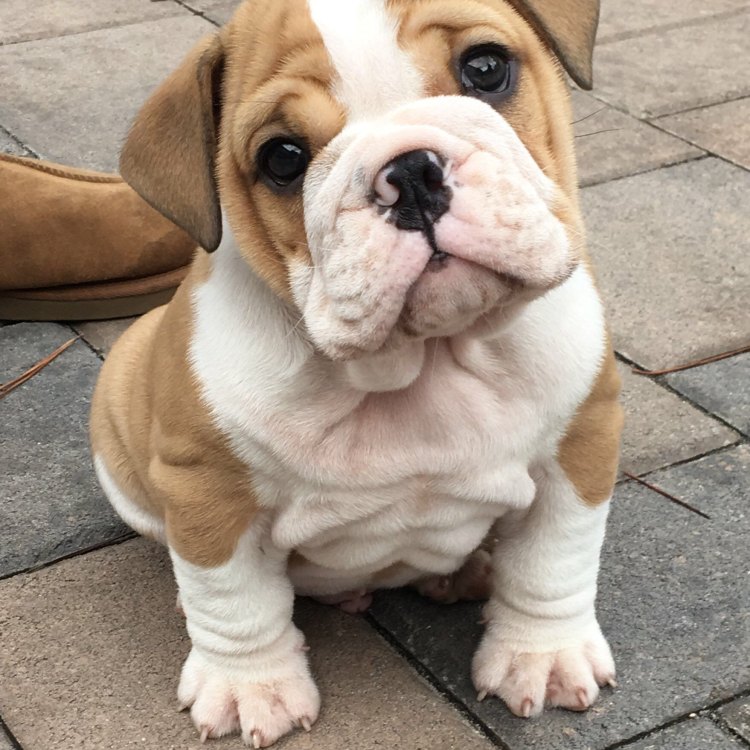
Bulldog
- Adult Size: Medium to large, weighing between 40-50 pounds (18-23 kg)
- Average Lifespan: 8-10 years
- Reproduction: Sexual reproduction
- Reproductive Behavior: Mating occurs between male and female Bulldogs
- Sound or Call: Bulldogs are not known for their vocalization
- Migration Pattern: Non-migratory
- Social Groups: Bulldogs are generally friendly and sociable with humans and other animals
- Behavior: Bulldogs are known for their friendly and gentle nature, but they can also be stubborn at times
- Threats: Health issues, such as breathing problems, joint disorders, and skin allergies
- Conservation Status: Not applicable
- Impact on Ecosystem: Bulldogs do not have a significant impact on the ecosystem
- Human Use: Companionship and as a family pet
- Distinctive Features: Short, wrinkled face, strong build, distinctive underbite
- Interesting Facts: Bulldogs have a unique history and were originally bred for bull-baiting in England. They are now popular as companion animals and are known for their loyalty and affection towards their owners.
- Predator: No natural predators, but can be susceptible to attacks from larger animals if not properly supervised
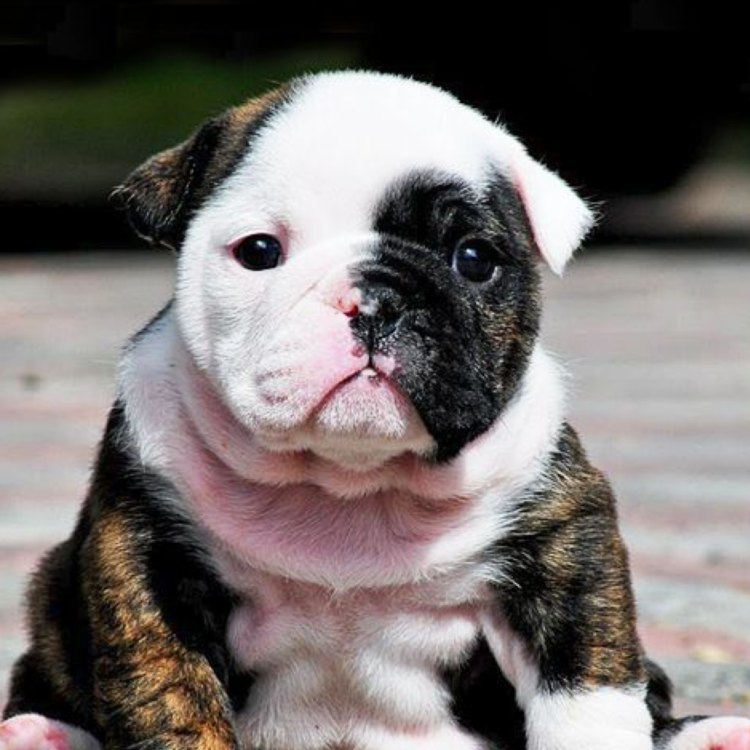
Canis lupus familiaris
The Lovable Bulldog: A Unique and Enduring Breed
In a world where there are hundreds of dog breeds to choose from, one breed stands out for its distinctive features and lovable personality - the Bulldog. With its short, wrinkled face, strong build, and distinctive underbite, the Bulldog is a breed that is hard to miss. But what makes them so unique? In this article, we will explore the fascinating world of Bulldogs and discover what sets them apart from other dog breeds.The Basics: Size, Lifespan, and Reproduction
The Bulldog is a medium to large-sized breed that typically weighs between 40-50 pounds (18-23 kg) PeaceOfAnimals.Com. They have a compact and muscular build, giving them a well-balanced appearance. Despite their size, they are known for their low energy levels and are content with a daily walk and some playtime.On average, Bulldogs have a lifespan of 8-10 years, which is relatively shorter compared to other dog breeds. However, with proper care and attention, they can live a healthy and happy life well into their senior years.
Reproduction in Bulldogs follows the typical sexual reproduction pattern, where mating occurs between a male and a female. Female Bulldogs can have difficulty giving birth naturally due to their wide heads, and a cesarean section is often required to deliver their puppies safely. This is something to keep in mind if you are considering breeding Bulldogs.
Social Behavior and Migration Patterns
Bulldogs are social animals, and they thrive in the company of humans and other animals. Due to their friendly and gentle nature, they make excellent family pets and get along well with children Belted Kingfisher. They are not known for their vocalization and are a relatively quiet breed, making them ideal for apartment living.Unlike some dog breeds that are known to wander or have a strong urge to explore, Bulldogs are non-migratory. They prefer to stay close to their owners and are content with their daily routine.
Behavior and Temperament
Bulldogs are well-known for their friendly and easy-going nature, which makes them a popular choice for families. They crave human attention and love to be with their owners at all times.However, Bulldogs can also be quite stubborn and have a mind of their own. This trait can make training a bit challenging, but with patience and positive reinforcement, they can learn basic commands and make well-behaved pets.
When it comes to their behavior towards other animals, Bulldogs can have a dominant streak and may not get along well with other dogs, especially of the same sex. It is essential to socialize them from a young age to prevent any aggressive behavior.
Potential Threats and Conservation Status
Like all dog breeds, Bulldogs are prone to certain health issues that pet owners should be aware of. Due to their short faces, they are more susceptible to breathing problems and overheating. They are also prone to joint disorders, such as hip dysplasia, and skin allergies.Fortunately, there is no conservation status for Bulldogs, as they are not an endangered species. However, as responsible pet owners, we have a duty to ensure that they are bred and raised in a safe and healthy environment, free from any unethical practices.
Human Use and Distinctive Features
Bulldogs have been used for various purposes throughout history. Originally, they were bred for bull-baiting in England, a cruel and barbaric sport that has since been banned. However, people soon realized their loving and loyal nature, and Bulldogs became popular as companions and family pets.One of the most distinctive features of Bulldogs is their short, wrinkled face, which gives them a unique appearance. Their wide heads, strong jaws, and underbite also add to their charm. But more than their physical appearance, Bulldogs are known for their loving and affectionate nature, which has made them a beloved dog breed all over the world.
A Fascinating History and Interesting Facts
Bulldogs have a long and colorful history, which has contributed to their unique characteristics. They were originally bred in England for the purpose of bull-baiting, where they were trained to fight and take down bulls. They were also used in the cruel practice of bear-baiting, where they were pitted against bears for entertainment.Thankfully, these barbaric practices were banned in the 19th century, and Bulldogs were no longer used for fighting. Instead, they were bred for their friendly and gentle nature, which made them popular as companions.
In the United States, Bulldogs gained popularity in the 19th century, and they were used as the mascot for Yale University. Today, they are one of the most recognizable and beloved dog breeds, known for their loyalty and affection towards their owners.
No Natural Predators, but Potential Dangers
Being a domesticated breed, Bulldogs do not have any natural predators. However, they can be susceptible to attacks from larger animals if not properly supervised. It is essential to keep an eye on your Bulldog while they are outside and supervise any interactions with other animals.Another potential danger for Bulldogs is irresponsible breeding practices. As mentioned earlier, their short faces put them at risk of breathing problems, and unethical breeding can exacerbate these issues. It is crucial to obtain a Bulldog from a reputable breeder who prioritizes the health and well-being of the breed.
Conclusion
In conclusion, Bulldogs are a unique and enduring breed that has captured the hearts of people all over the world. From their distinct physical features to their loving and sociable nature, they have truly become a beloved companion for many. However, it is vital to remember that they are not just cute, wrinkly faces, but living beings that require proper care and attention. As pet owners, it is our responsibility to ensure that this wonderful breed continues to thrive for generations to come.

A Friendly and Loyal Companion: All about Bulldogs
Disclaimer: The content provided is for informational purposes only. We cannot guarantee the accuracy of the information on this page 100%. All information provided here may change without prior notice.

